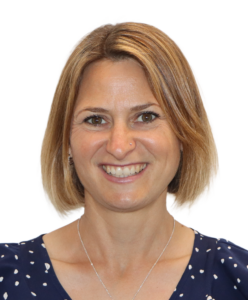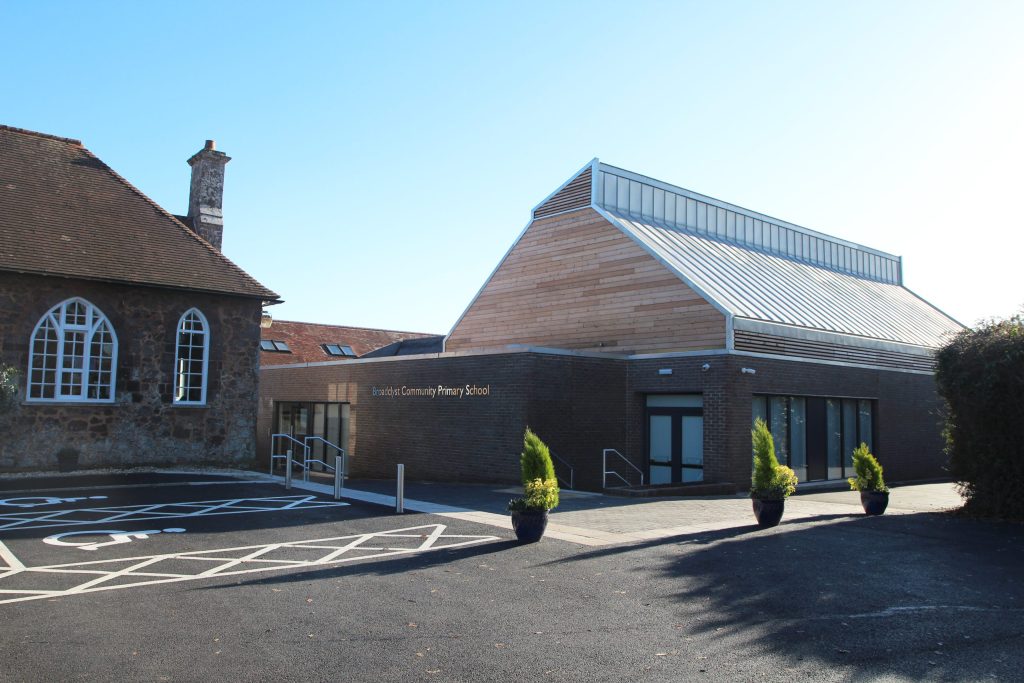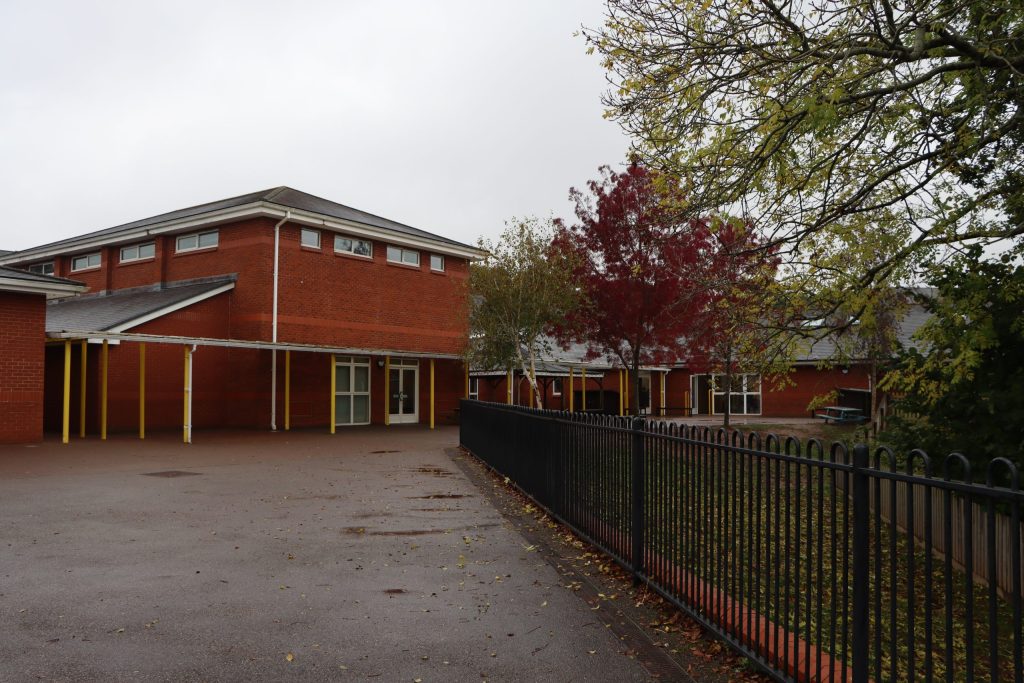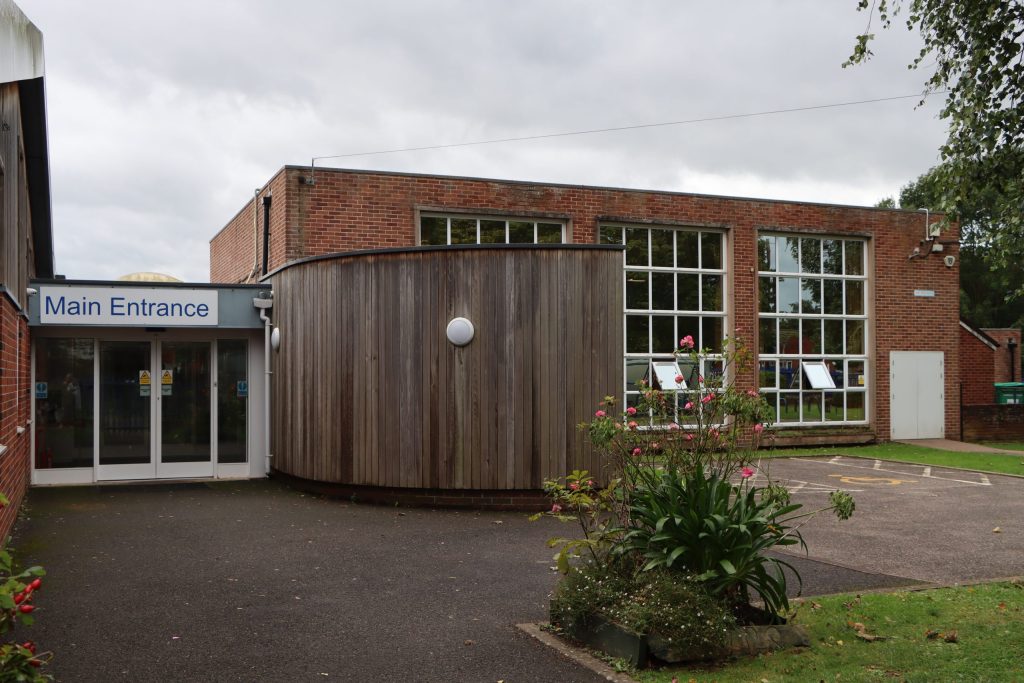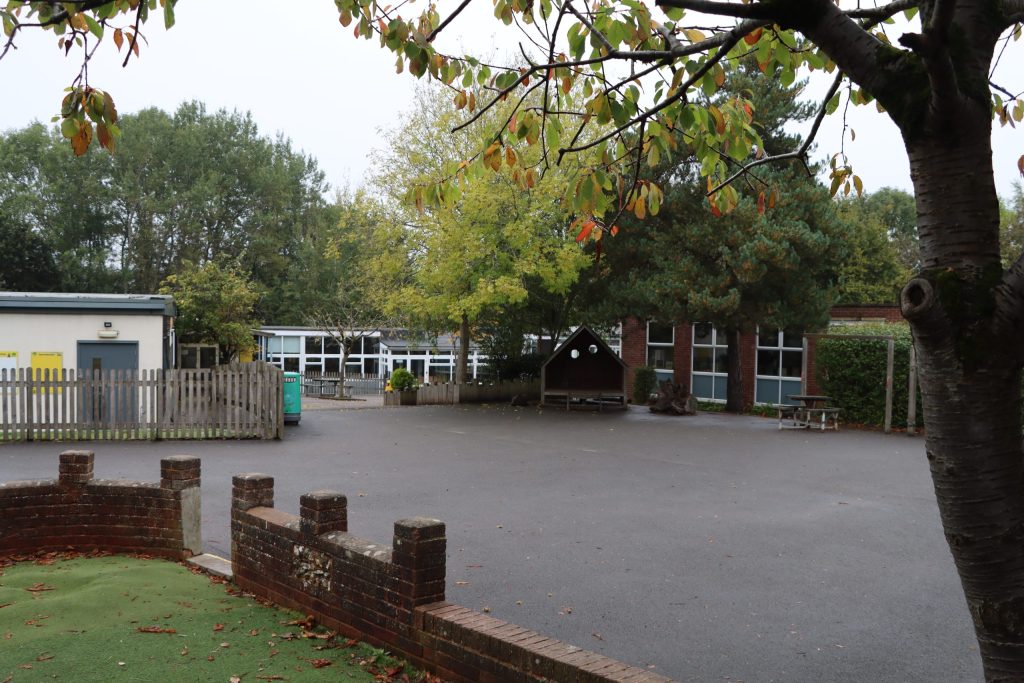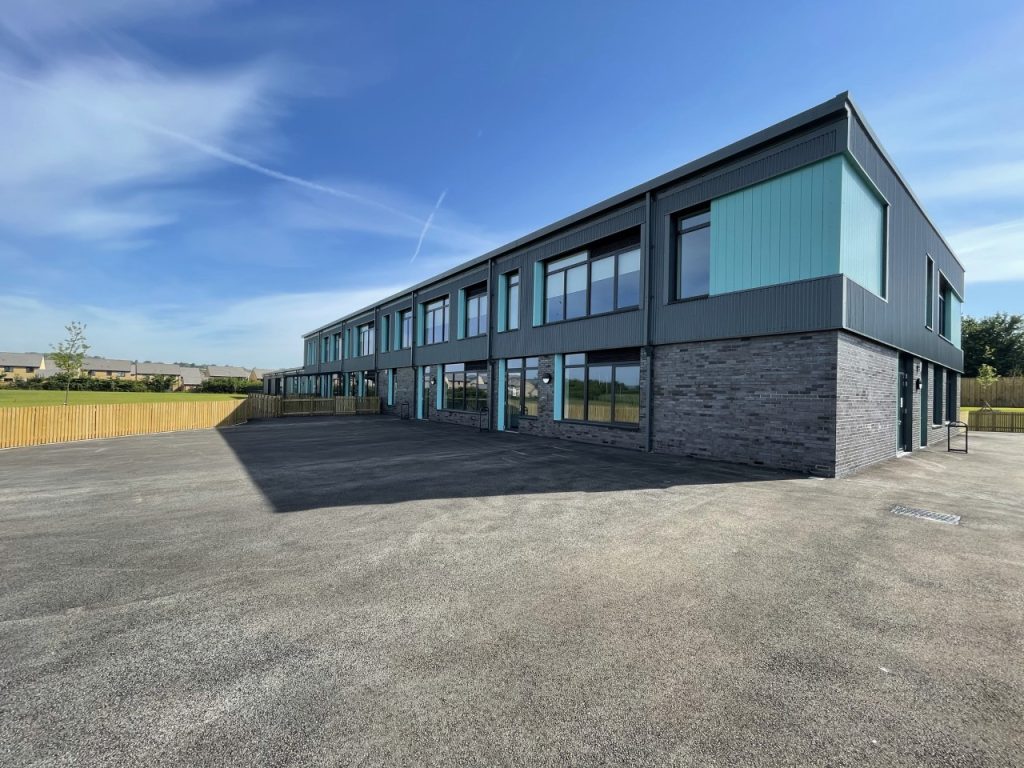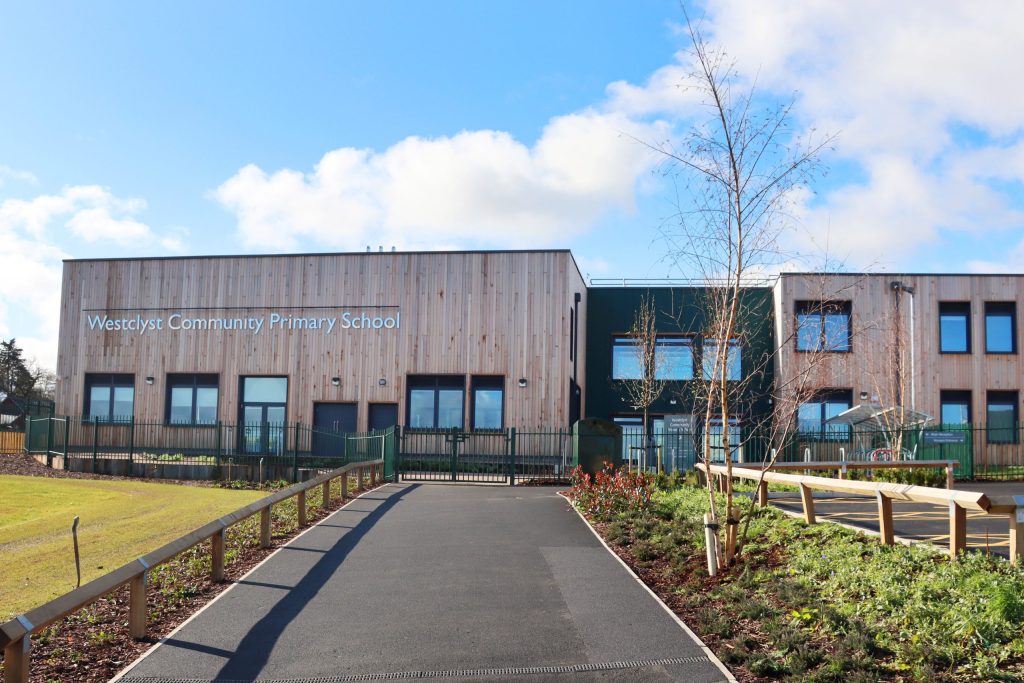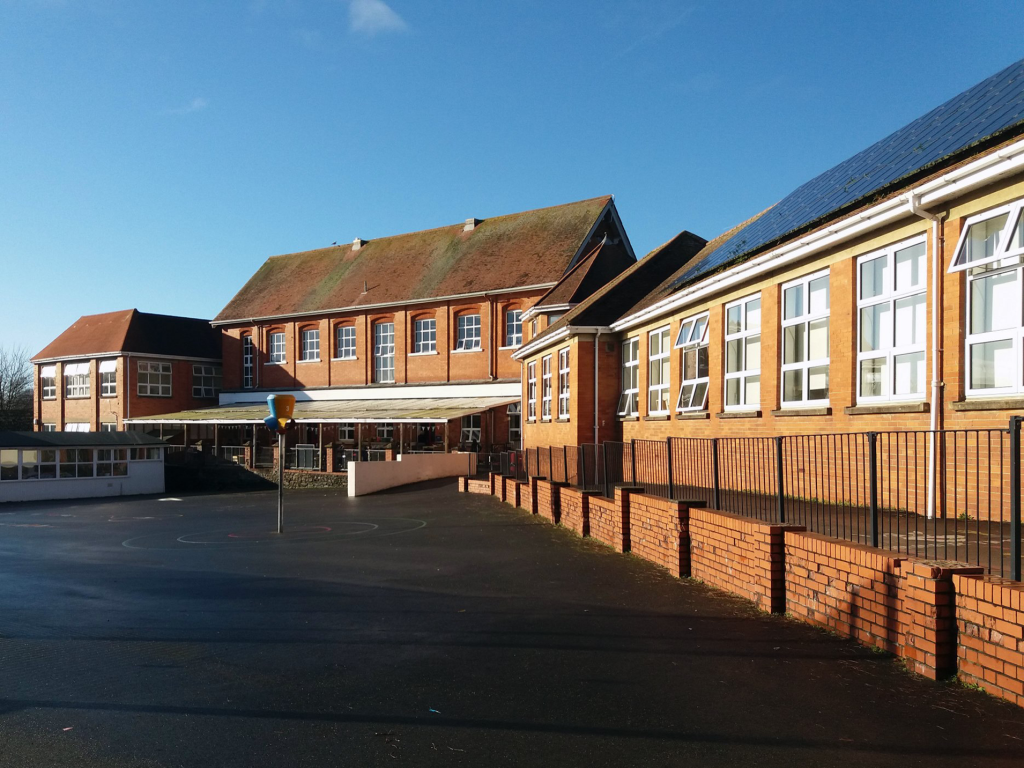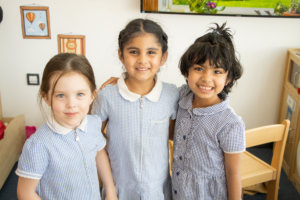
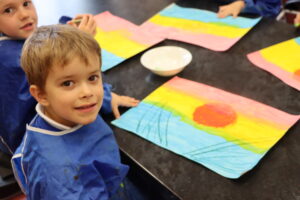
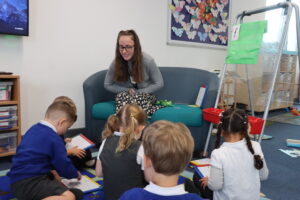
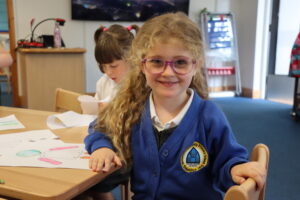
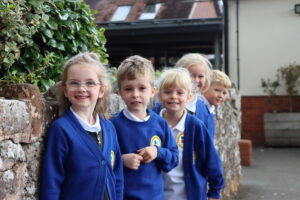
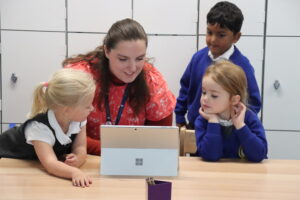
Spoken Language
- Listen to statements made by adults and classmates, respond appropriately; ask relevant questions to clarify knowledge, to expand their knowledge and take opportunities to learn new vocabulary across all subjects
- Explain what their opinions are and why they hold them; maintain attention and participate actively in short collaborative conversations, stay on topic and respond to comments
- Give well-structured descriptions, explanations and narratives for different purposes, including for expressing feelings (to a level appropriate to age)
- Use spoken language to develop understanding through speculating, predicting, imagining and exploring ideas (to a level appropriate to age)
- Speak audibly, with developing fluency and an increasing command of Standard English; participate in class discussions, role play, improvisations, presentations such as student voice, performances in the studio and to a live audience
- Attempt to gain the interest of the listener(s) and begin to think about the opinions and views of others; to be aware of formal & informal manners of speaking to an age appropriate level (registers of communication).
Word Reading
- Apply phonic knowledge and skills as the route to decode words
- Be confident in the recall of ReadWrite Inc. sound sets 1, 2 & 3.
- Read both real and pseudo words accurately by decoding and blending sounds in unfamiliar words containing GPCs that have been taught
- Read common red words (sight vocabulary), noting unusual correspondences between spelling and sound and where these occur in the word
- Read words containing taught GPCs and –s, –es, –ing, –ed, –er and –est endings and read other words of more than one syllable that contain taught GPCs
- Read words with contractions [for example, I’m, I’ll, we’ll], and understand that the apostrophe represents the omitted letter(s)
- Read aloud accurately books that are consistent with their developing phonic knowledge and that do not re-quire them to use other strategies to work out words and re-read work to gain extra levels of meaning.
Reading – Comprehension
Engagement in Group and Class Reading
- Listen to and discuss a wide range of poems, stories and non-fiction at a level beyond that at which they can read independently and will link what they read or hear read to their own experiences
- Become very familiar with key stories, fairy stories and traditional tales, retelling them and considering their particular characteristics, recognising and joining in with predictable phrases
- Have knowledge of rhymes with repetitive patterns and poems, and to recite some by heart
- Discuss word meanings, linking new meanings to those already known
- Have experience of basic textual documents such as signs and lists. They will also have experience of basic information texts (reports, recounts and dictionaries)
Independent Reading
- Draw on what they already know or on background information and vocabulary provided by the teacher
- Check that the text makes sense to them as they read and correct inaccurate reading
- Discuss the significance of the title and events
- Make inferences on the basis of what is being said and done and predict what might happen on the basis of what has been read so far
- Participate in discussions about what is read to them, taking turns and listening to what others say and explain clearly their understanding of what is read to them
Writing
Spelling
- Spell words containing each of the 40+ phonemes already taught and common exception words, such as the days of the week
- Name the letters of the alphabet in order and use letter names to distinguish between alternative spellings of the same sound
- Add prefixes and suffixes using the spelling rule for adding –s or –es as the plural marker for nouns and the third person singular marker for verbs; use the prefix un– and use –ing, –ed, –er and –est where no change is needed in the spelling of root words [for example, helping, helped, helper, eating, quicker, quickest]
- Apply simple spelling rules and guidance, as suggested by ReadWrite Inc.
- Write from memory simple sentences dictated by the teacher that include words using the GPCs and com-mon exception words taught so far
Handwriting
- Sit correctly at a table, holding a pencil comfortably and correctly; begin to form lower-case letters in the cor-rect direction, starting and finishing them in the right place; forms capital letters and forms digits 0-9
- Understand which letters belong to which handwriting ‘families’ (i.e. letters that are formed in similar ways) and to practise these
Grammar
- Leave spaces between words
- Join words and clauses; begin to punctuate sentences using a capital letter and a full stop, question mark or exclamation mark; use capital letters for names of people, places, the days of the week, and the personal pronoun ‘I’
- The grammar appropriate to year 1 (as stated by the NC) and use the grammatical terminology in English Ap-pendix 2 in discussing their writing
Composition
- Write sentences by saying out loud what they are going to write about; compose a sentence orally before writing it; sequence sentences to form short narratives and re-read what they have written to check that it makes sense
- Discuss what they have written with the teacher or other pupils and read aloud their writing clearly enough to be heard by their peers and the teacher
Number and Place Value
- To count to and across 100, forwards and backwards, beginning with 0 or 1, or from any given number
- To count, read and write numbers to 100 in numerals; count in multiples of twos, fives and tens
- Identify one more and one less when given a number
- Use the language of: equal to, more than, less than (fewer), most, least
- Identify and represent numbers using objects and pictorial representations including the number line
- Read and write numbers from 1 to 20 in numerals and words.
Addition and Subtraction
- Represent and use number bonds and related subtraction facts within 20
- Add and subtract one-digit and two-digit numbers to 20, including zero
- Read, write and interpret mathematical statements involving addition (+), subtraction (-) and equals (=) signs (appears also in Written Methods and Mental Calculation)
- Solve one-step problems that involve addition and subtraction, using concrete objects and pictorial representations, and missing number problems
Multiplication and Division
- Solve one-step problems involving multiplication and division, by calculating the answer using concrete objects, pictorial representations and arrays with the support of the teacher
- Make connections between arrays, number patterns, and counting in twos, fives and tens.
- Use mental methods to solve simple problems explaining methods and reasoning orally (eg doubling/halving)
Fractions (including Decimals and Percentages)
- Recognise, find and name a half as one of two equal parts of an object, shape or quantity
- Recognise, find and name a quarter as one of four equal parts of an object, shape or quantity
Measurement
Compare, describe and solve practical problems for:
- Lengths and heights [e.g. long/short, longer/shorter, tall/short, double/half]
- Mass/weight [e.g. heavy/light, heavier than, lighter than]
- Capacity and volume [e.g. full/empty, more than, less than, half, half full, quarter]
- Time [e.g. quicker, slower, earlier, later]
Measure and begin to record the following:
- Lengths and heights
- Mass/weight
- Capacity and volume
- Time [hours, minutes,seconds]
- Suggest suitable standard or uniform non-standard units and measuring equipment to estimate, then meas-ure a length, mass or capacity
- Recognise and know the value of different denominations of coins and notes
- Sequence events in chronological order using language (eg before, after, next, today, yesterday, tomorrow, morning afternoon, evening)
- Recognise language relating to dates, including days of the week, weeks, months, years
- Tell the time to the nearest hour and half past the hour
Geometry
- Recognise the name of common 2-D and 3-D shapes
- Use everyday language to describe properties and positions of 2D and 3D shapes
- Describe position, direction and movement, including whole, half, quarter and three quarter turns
Knowledge
Biology – Plants
- To identify and name a variety of common wild and garden plants, including deciduous and evergreen trees
- To identify and describe the basic structure of a variety of common flowering plants, including trees
- About animals, including humans
- To identify and name a variety of common animals including fish, amphibians, reptiles, birds and mammals
- To identify and name a variety of common animals that are carnivores, herbivores and omnivores
- To describe and compare the structure of a variety of common animals (fish, amphibians, reptiles, birds and mammals, including pets)
- To identify, name, draw and label the basic parts of the human body and say which part of the body is associ-ated with each sense
Physics – Seasonal Changes
- Observe changes across the four seasons.
- Observe and describe weather associated with the seasons and how day length varies.
Chemistry – Everyday Materials
- Distinguish between an object and the material from which it is made.
- Identify and name a variety of everyday materials, including wood, plastic, glass, metal, water and rock.
- Describe the simple physical properties of a variety of everyday materials.
- Compare and group together a variety of everyday materials on the basis of their simple physical properties
Working Scientifically
Plan
- Ask simple questions and find they can be answered in different ways.
Do
- Observe closely, using simple equipment
- Perform simple tests
- Identify and classify
- Gather and record data to help in answering questions
Review
- Use their observations and ideas to suggest answers to questions
Investigation/Experiments
- Time Capsule to Ancient Egypt Pupils draw and label the sensory organs on their body looking at how Egyptians originally mummified these parts. Which animals would be found in Ancient Egypt?
- What do Polar Bears Eat? Pupils investigate the diet of Polar Bears, and the impact climate change is having on their diet.
- What Material would make the best shield? Pupils test out a variety of materials considering which one would be best suited to protecting them.
- Growing Global Community Project – Growing Vegetables Pupils will learn about how different plants grown in their local area and compare them with plants that grow in schools linked with us in other countries. They will during this experiment with what plants need to grow as well as identifying different plants.
- Growing Global Community Project – Plant Hunt Pupils will learn about how different plants grown in their local area and compare them with plants that grow in schools linked with us in other countries. They will visit a local forested area to find and classify a variety of plants and trees.
Me and My Family: What was life like for my Great-Grandparents?
- Personal timeline
- How we shop today and how shopping has changed over time
- How have their homes changed?
Explorers: The Discovery of Antarctica
- The race to reach the last unexplored place on earth! Who is Ernest Shackleton?
- How has Antarctica changed over time?
Transport Through Time
- Plot the evolution of transport on a timeline
- How did people get around before wheels?
- The invention the car – Carl Benz
- The first aeroplane – The Wright Brothers
- Getting to space – Neil Armstrong and Valentina Tereshkova
Changes in Farming
- Where does our food come from?
- How and why has farming evolved?
The Tudors
- What was life like in the Tudor times?
- Compare Rich and Poor Tudors. Life in a castle
- Host a Tudor banquet for Reception
My Local Area
- Use digimaps to study changes in our local area
- Look at Physical and human features of our locality and how the balance has changed
An Area of Human Geography: Where I Live
- To explain the route that they take to get to school.
- To make comparisons between features of different places.
- To explain the order an address is written in on a letter.
- To use aerial photographs and plan perspectives to recognise landmarks and basic human features.
- To devise a simple map, using a basic symbols key.
Two areas of Physical Geography: Looking at the World & Farming
- To name the world’s seven continents and the five oceans.
- How travel through these different areas is different.
- To locate hot and cold areas of the world, by focusing on the equator.
- To identify different weather types and how they are useful or hinder the growing of crops.
- Geographical similarities and differences between different locations.
- To consider where food could grow.
- To look at the weather of Britain and Spain and consider the crops that could grow.
- About British and Spanish local cultures, including food and local produce.
A range of Geographical skills: Map Reading, Map Making & Fieldwork
- To use world maps, atlases, globes and digital maps to locate key continents, countries and oceans.
- To use simple compass directions (N, E, S, W)
- To devise a simple map of an imaginary place and construct a key with basic symbols.
- Use simple fieldwork and observational skills to study the geography of their school and surrounding area.
- To walk around the school and local area, trying to describe the noticeable human and physical features.
Learning about Religion: Introduce Early Concepts
- About who Christians, Muslims, Jews and Buddhists are.
- About who they worship.
- To consider the rules each belief follows.
- To identify what symbols are associated to individual beliefs.
- To consider what values Humanists hold.
Learning from Religion: ‘What does it mean to be good?’
- About why rules are important and what makes a happy classroom.
- To consider how religious and non-religious stories exemplify good moral decisions.
- To consider how to care for others and the world.
British Council Theme for Global Citizens: Understanding Others
- To understand that there are people different from ourselves.
- To discuss diversity and the challenges some people may face.
- To compare similarities and differences between our culture and others.
- To explore the concept of fairness.
- What it means to belong to a community.
Computer Science
- To explore using individual commands, both with other learners and as part of a computer program.
- To identify what each floor robot command does and use that knowledge to start predicting the outcome of programs.
- To explore on-screen programming through ScratchJr.
- To explore the way a project looks by investigating sprites and backgrounds.
- To use programming blocks to use, modify, and create programs.
- To explore and understand program design through the introduction of algorithms.
Information Technology
- To understand and use labelling, grouping, and searching as important aspects of data and information.
- To how searching is a common operation in many applications, and requires an understanding that to search data, it must have labels.
- To understand about assigning data (images) with different labels in order to demonstrate how computers are able to group and present data.
- To use labels to put objects into groups, and label these groups.
- To count a small number of objects, before and after the objects are grouped.
- To sort objects into different groups, based on the properties they choose.
- To use their ability to sort objects into different groups to answer questions about data.
- To develop their understanding of the various aspects of using a computer to create and manipulate text.
- To use a keyboard and mouse to enter and remove text.
- To change the look of their text, and be able to justify their reasoning in making these changes.
- To consider the differences between using a computer to create text, and writing text on paper. They will be able to explain which method they prefer and explain their reasoning for choosing this.
- To develop understanding of a range of tools used for digital painting.
- To use these tools to create their own digital paintings, while gaining inspiration from a range of artists’ work.
- To consider their preferences when painting with and without the use of digital devices.
- To develop understanding of technology and how it can help us.
- To become familiar with the different components of a computer by developing keyboard and mouse skills.
Digital Literacy
- To recognise common uses of information technology beyond school
- To use technology safely and respectfully, keeping personal information private; identify where to go for help and support when they have concerns about content or contact on the internet or other online technologies.
Landscape Painting – Coomber Collaboration/Mixed Media/Large Scale
- To work collaboratively.
- Work on a large scale with a variety of techniques.
- To experiment and explore possibilities using basic materials and resources.
Clay Work- Ancient Egypt
- Flick paint to decorate.
- How to manipulate clay.
- How to cut paper to enhance fine motor skills and dexterity.
Remembrance Day – Sculpture Poppy
- How to use context with art.
- Enhancing collage techniques previously learnt to create a more detailed image.
Christmas Card – Painting/Sponging/Collage
- Drawing skills will be developed through observation and demonstration.
- The importance of observation will be taught through free and guided drawing.
Portraiture – Drawing, Collage
- Applying paint to collaged materials.
- Exploring the effects of paint upon different surfaces.
Dinosaurs (Every Other Year) – Painting Effects/Cutting or Frozen Planet – collage/gluing effects
- Using other materials to create different effects such as glue upon tissue to get a shiny effect.
Castles and Dragons
- Collaborative building, painting large areas and printing effects.
- Cutting, sticking and arranging objects effectively.
- Interacting with final outcome, playing with castles that they have built.
- Transport through time – design and build Hot Air Balloons.
Transport Through Time – Design and Build Hot Air Balloons
- Observing, designing and building uses a host of critical skills which builds upon their 2D and 3D work achieved in previous terms.
- Observation, Developmental drawings and making.
- This builds upon their model making from Spring 1 but introduces the planning element from drawings to final outcome.
Patterns in Nature – Leaf Press Print into Clay
- Using clay in a different way, introduces new possibilities with a basic resource.
- Applying found objects in nature to leave an imprint in a decorative way encourages preservation of nature.
- This project involves gathering interesting natural objects and creating artwork outside the classroom, rubbings with wax crayon, drawing and printing techniques.
At the Beach – Seahorse Painting/Mixed Media
- Developing the techniques learnt, to create a more detailed image using paint and glue with a painted background.
Knowledge
- Use the basic principles of a healthy and varied diet to prepare dishes.
- Understand where food comes from.
- Explore and evaluate a range of existing products.
- Generate, develop, model and communicate their ideas through talking, drawing, templates, mock-ups and, where appropriate, information and communication technology.
Project
- Eggy Challenge: Cars – Pupils will use their knowledge of materials to construct cars that can carry an egg down a ramp without breaking.
Singing
- Sing simple songs, chants and rhymes) from memory, singing collectively and at the same pitch, responding to simple visual directions (e.g. stop, start, loud, quiet) and counting in.
- Begin with simple songs with a very small range, mi-so. Include pentatonic songs
- Sing a wide range of call and response songs to control vocal pitch and to match the pitch they hear with accuracy.
Listening
The following styles of music will be introduced.
Western Classical Tradition and Film:
- Classical e.g Mozart
- 20th Century e.g Holst
Popular Music:
- Art pop e.g Kate Bush
- Blues e.g Ma Rainey
Musical Traditions:
- Brazil- Samba e.g Sergio Mendes/Carlinhos Brown
Composing
- Improvise using question and answer phrases.
- >Create short sequences of sounds in response to stimuli.
- Understand the difference between creating a rhythm pattern and pitch pattern.
- Use music technology.
- Recognise how graphic notation can represent created sounds.
Musicianship
Pulse/Beat
- Walk, move or clap a steady beat with others, changing the speed of the beat as the tempo of the music changes.
- Use body percussion and classroom percussion playing repeated rhythm patterns (ostinati) and short, pitched patterns on tuned instruments to maintain a steady beat
- Respond to the pulse in recorded/live music through movement and dance
Rhythm
- Perform short copycat rhythm patterns accurately, led by the teacher
- Perform short repeating rhythm patterns (ostinati) while keeping in time with a steady beat.
- Perform word-pattern chants (e.g. ca-ter-pil-lar crawl, fish and chips); create, retain and perform their own rhythm patterns
Pitch
- Listen to sounds in the local school environment, comparing high and low sounds.
- Sing familiar songs in both low and high voices and talk about the difference in sound.
- Follow pictures and symbols to guide singing and playing, e.g. 4 dots = 4 taps on the drum.
Relationships: Ourselves and others; similarities and differences; individuality; our bodies; people who care for us; groups we belong to; families
- What they like/dislike and are good at
- What makes them special and how everyone has different strengths
- How their personal features or qualities are unique to them
- How they are similar or different to others, and what they have in common
- That family is one of the groups they belong to, as well as, for example, school, friends, clubs
- About the different people in their family / those that love and care for them
- What their family members, or people that are special to them, do to make them feel loved and cared for
- How families are all different but share common features – what is the same and different about them
- About different features of family life, including what families do / enjoy together
- That it is important to tell someone (such as their teacher) if something about their family makes them feel unhappy or worried
Health and Wellbeing: Being healthy; hygiene; medicines; people who help us with health; keeping safe; people who help us
- What being healthy means and who helps help them to stay healthy (e.g. parent, dentist, doctor)
- That things people put into or onto their bodies can affect how they feel
- How medicines (including vaccinations and immunisations) can help people stay healthy and that some people need to take medicines every day to stay healthy
- Why hygiene is important and how simple hygiene routines can stop germs from being passed on
- What they can do to take care of themselves on a daily basis, e.g. brushing teeth and hair, hand washing
- That people have different roles in the community to help them (and others) keep safe – the jobs they do and how they help people
- Who can help them in different places and situations; how to attract someone’s attention or ask for help; what to say
- How to respond safely to adults they don’t know
- What to do if they feel unsafe or worried for themselves or others; and the importance of keeping on asking for support until they are heard
- How to get help if there is an accident and someone is hurt, including how to dial 999 in an emergency and what to say
Living in the Wider World: Money; making choices; needs and wants; ourselves and others; the world around us; caring for others; growing and changing
- What money is – that money comes in different forms
- How money is obtained (e.g. earned, won, borrowed, presents)
- How people make choices about what to do with money, including spending and saving
- The difference between needs and wants – that people may not always be able to have the things they want
- How to keep money safe and the different ways of doing this
- How kind and unkind behaviour can affect others; how to be polite and courteous; how to play and work co-operatively
- The responsibilities they have in and out of the classroom
- How people and animals need to be looked after and cared for
- What can harm the local and global environment; how they and others can help care for it
- How people grow and change and how people’s needs change as they grow from young to old
- How to manage change when moving to a new class/year group
- Perform basic movements including running, jumping, throwing and catching, while developing balance, agility and co-ordination.
- Identify simple balances, jumps and methods of travelling.
- Participate in team games, showing an understanding of rules.
- Replicate and create simple movements in response to a range of stimuli in Dance.
- Identify some trees and plants in the Forest School Site.
- Identify risks in the Forest School site and how we can overcome them.
- Identify the risks and benefits of using fire and how to enjoy it safely.
- Use tools to make specific items during Forest School – use drill bits to make forest cookies and pixie telescopes.
- Grow the necessary vegetables to create this to create a main meal to eat.
Language Knowledge
- To count to 20
- To know a range of basic conversation (age, where do you live, birthday)
- Colours(+purple, pink, orange, grey, brown)
- Months of the year
- Family members (mum, dad, bother, sister)(+aunt, uncle, grandma, grandad)
- Basic pets
Speaking and Listening
- I can listen carefully to spoken Spanish and respond.
- I can speak in basic sentences.
- I can continue to appreciate stories, songs, poems and rhymes in Spanish.
- I can develop accurate pronunciation and intonation so that others understand me.
Reading and Writing
- I can write single words to label a picture.
- I can link the spelling, sound and meaning of words.
Year 1
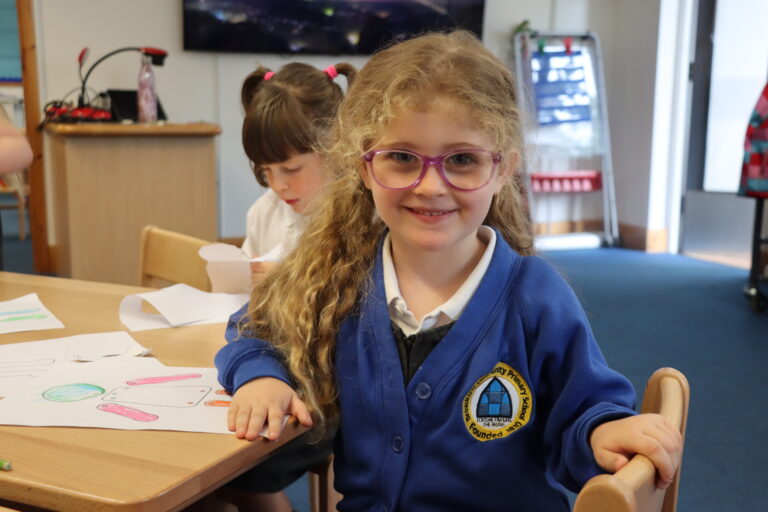
Year 1 is the first year of the National Curriculum and where the children’s learning develops and begins to fall into place. It is a time of transition from the Early Years and the learning becomes more formal, with an emphasis on number, language and literacy, including phonics. Other opportunities for the children in Year 1 include dance and forest school.
Our Year 1 Teachers
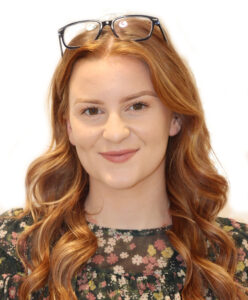
Broadclyst
Rebecca Hughes
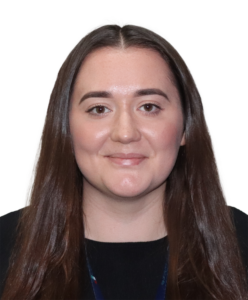
Broadclyst
Hannah Lobb
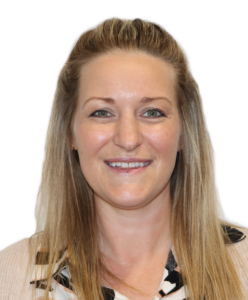
Monkerton
Amy Ruffell
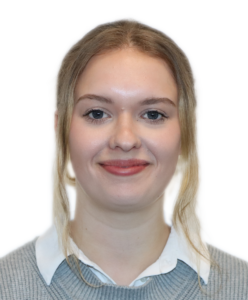
Monkerton
Daisy Elwick
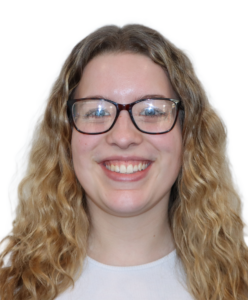
Westclyst
Georgia Long
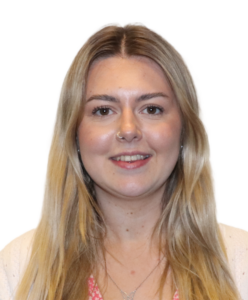
Westclyst
Jennifer Coleman

Yeo Valley
Sian Tetley
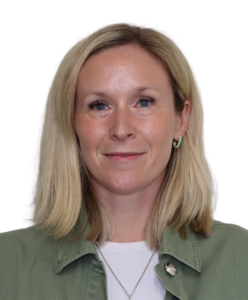
Marpool
Victoria Vining
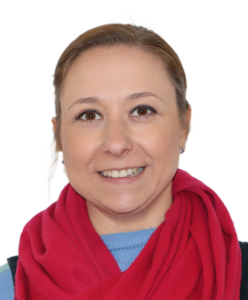
Countess Wear
Holly Veal
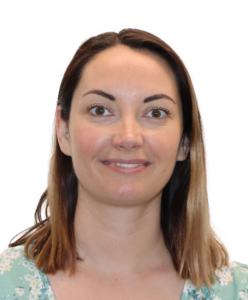
Clyst Heath
Eloise Marney
